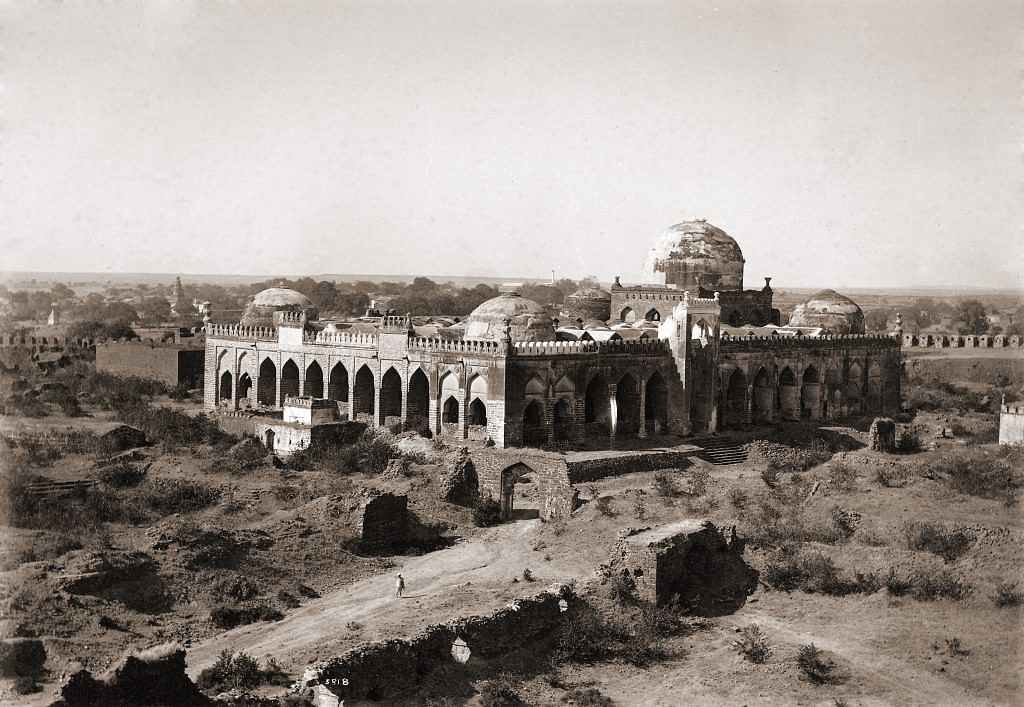The Bahmani sultanate, despite what the BJP believes, influenced Karnataka greatly.
The Congress and BJP are currently at loggerheads in Karnataka over the celebration of the ‘Bahmani Utsava’, following the controversial celebration of Tipu Jayanti. The Karnataka government’s decision to hold a three-day festival, celebrating the contributions of the Bahmani sultanate to the region’s culture and history, has met with resistance from the BJP.
Sharan Prakash Patil, minister in-charge of Gulbarga, told ThePrint that the three-day literary event will focus on the history, culture and cuisine of the Bahmanis, and look at how they enriched the Deccan areas.
However, BJP leaders, like Shobha Karandlaje, oppose the celebration of what is seen as ‘Muslim rule’ in the Deccan plateau. They’ve argued that the Bahmani Muslim rulers in the past have tortured and killed people in Karnataka and questioned the celebrations.
So who are the Bahmani Muslims?
The first rulers of a unified Deccan
The Bahmani sultanate, or the Bahmani empire, was established in 1347 by a Turkish general named Alauddin Bahman Shah, who had revolted against Mohammed bin Tughlaq of the Delhi Sultanate.
Bahman Shah made Kalaburgi (or Gulbarga) his capital in Karnataka, and set up an empire that would rule the Deccan for nearly 200 years.
There were 14 sultans who ruled over the kingdom over the two centuries, but the empire reached its peak under the vizierate of an adept minister named Mahmud Gawan. There is not much popular literature on the sultanate, with the main source being Persian historian Ferishta’s Tairikh-i-Firishta, translated into English as The History of the Rise of the Mahomedan Power.
Knowledge about the empire is largely based on architectural remnants, coins, and accounts like Ferishta’s. The sultanate’s capital was Gulbarga (known as Ahsanabad at the time) till 1425, after which it shifted to Bidar (then known as Muhammadabad) until it disintegrated in 1527.
The sultanate disintegrated after losing a battle to King Krishnadevaraya of Vijayanagara, after which the last vestiges of Bahmani empire were destroyed. The sultanate then dissolved into five kingdoms where are collectively known as the Deccan Sultanates: Qutb Shahi of Golconda (now known as Hyderabad), Nizam Shahi of Ahmednagar, Barid Shahi of Bidar, Imad Shahi of Berar and Adil Shahi of Bijapur.
Wars with Hindu neighbours
The Vijayanagara empire was the biggest rival of the Bahmani empire. The two empires were constantly locked in conflict, mainly over territory. The first war reportedly took place in 1399, and the second one took place in 1407.
Vijayanagara lost both wars, and Ferishta’s accounts record that the sultan at the time married the Princess of Vijayanagara in 1408.
After 1442, Ferishta writes that the king of Vijayanagara, Deva Raya II, evaluated why his army kept losing and the empire undertook massive military reforms to counter their rivals.
Excerpts from H.K. Sherwani’s ‘The Bahmanis of the Deccan’ quotes Ferishta’s words about how Deva Raya II set about trying to reform his military by learning from his Muslim rivals.
He “gave orders to enlist Mussulmans (Muslims) in his service, allotting them estates, and erecting a mosque for their use in the city of Beejanuggur (Vijayanagara). He also commended that no one should molest them in the exercise of their religion, and moreover, he ordered a Koran to be placed before his throne on a rich desk, so that the faithful might before the ceremony of obeisance in his presence without sinning against their laws.”
How the Bahmanis contributed to Indian culture
The BJP says the Muslim sultanate should not be celebrated because of the destruction of Hindu life that they caused. However, while the two empires were certainly at war with each other, they were also fighting off other rivals.
The Vijayanagara kingdom, for example, was also warring with the Gajapatis from Odisha and the Zamorin of Calicut.
History suggests that the Bahmani Sultanate did more good than harm to the Deccan civilisation. The Bahmanis contributed a lot to the culture and architecture of the time.
Their distinctive style was a blend of Persian, Turkish, Arabic and local traditions. The Gol Gumbaz, the Charminar, and the Gulbarga Fort are all results of Bahmani influence.
Dakhani Urdu became the popular language, and Dakhani poetry flourished at the time— and is still performed in Hyderabad today.
The Bahmanis patronised the Sufi saint Hazrat Banda Nawaz, and his dargah in Gulbarga is a still a pilgrimage site. The famous metal handicraft style of Bidri also comes from the Bahmanis: the term ‘Bidri’ originates from Bidar.
